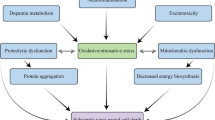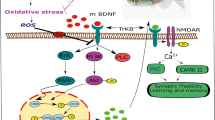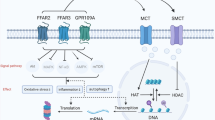Abstract
Published data supports the neuroprotective effects of several phenolic-containing natural products, including certain fruit, berries, spices, nuts, green tea, and olive oil. However, limited data are available for phenolic-containing plant-derived natural sweeteners including maple syrup. Herein, we investigated the neuroprotective effects of a chemically standardized phenolic-enriched maple syrup extract (MSX) using a combination of biophysical, in vitro, and in vivo studies. Based on biophysical data (Thioflavin T assay, transmission electron microscopy, circular dichroism, dynamic light scattering, and zeta potential), MSX reduced amyloid β1−42 peptide (Aβ1−42) fibrillation in a concentration-dependent manner (50–500 μg/mL) with similar effects as the neuroprotective polyphenol, resveratrol, at its highest test concentration (63.5 % at 500 μg/mL vs. 77.3 % at 50 μg/mL, respectively). MSX (100 μg/mL) decreased H2O2-induced oxidative stress (16.1 % decrease in ROS levels compared to control), and down-regulated the production of lipopolysaccharide (LPS)-stimulated inflammatory markers (22.1, 19.9, 74.8, and 87.6 % decrease in NOS, IL-6, PGE2, and TNFα levels, respectively, compared to control) in murine BV-2 microglial cells. Moreover, in a non-contact co-culture cell model, differentiated human SH-SY5Y neuronal cells were exposed to conditioned media from BV-2 cells treated with MSX (100 μg/mL) and LPS or LPS alone. MSX-BV-2 media increased SH-SY5Y cell viability by 13.8 % compared to media collected from LPS-BV-2 treated cells. Also, MSX (10 μg/mL) showed protective effects against Aβ1−42 induced neurotoxicity and paralysis in Caenorhabditis elegans in vivo. These data support the potential neuroprotective effects of MSX warranting further studies on this natural product.







Similar content being viewed by others
Abbreviations
- AD:
-
Alzheimer’s disease
- Aβ:
-
Amyloid-beta
- MSX:
-
Phenolic-enriched maple syrup extract
- ThT:
-
Thioflavin T
- TEM:
-
Transmission electron microscopy
- CD:
-
Circular dichroism
- DLS:
-
Dynamic light scattering
- Aβ1−42 :
-
Amyloid peptide 1–42
- DCFDA:
-
2′,7′-Dichlorofluorescin diacetate
- LPS:
-
Lipopolysaccharide
- RESV:
-
Resveratrol
- DMEM/F12:
-
Dulbecco’s modified Eagle medium:nutrient mixture F-12
- FBS:
-
Fetal bovine serum
- DMSO:
-
Dimethyl sulfoxide
- MTT:
-
[3-(4,5-Dimethylthiazol-2-yl)-2,5-diphenyltetrazolium bromide]
- CTG:
-
CellTiter-Glo
- ROS:
-
Reactive oxygen species
- NOS:
-
Nitric oxide species
- NO:
-
Nitric oxide
- IL-6:
-
Interleukin-6
- PGE2 :
-
Prostaglandin E2
- TNFα:
-
Tumor necrosis factorα
- ELISA:
-
Enzyme linked immunosorbent assay
- HPLC-DAD:
-
High performance liquid chromatography-diode array detection
- GAEs:
-
Gallic acid equivalents
References
Praticò D, Trojanowski JQ (2000) Inflammatory hypotheses: novel mechanisms of Alzheimer’s neurodegeneration and new therapeutic targets? Neurobiol Aging 21:441–445
Block ML, Zecca L, Hong J-S (2007) Microglia-mediated neurotoxicity: uncovering the molecular mechanisms. Nat Rev Neurosci 8:57–69
Heneka MT, O’Banion MK (2007) Inflammatory processes in Alzheimer’s disease. J Neuroimmunol 184:69–91
Alzheimer’s Association (2013) 2013 Alzheimer’s disease facts and figures. Alzheimers Dement 9:208–245
Sloane PD, Zimmerman S, Suchindran C, Reed P, Wang L, Boustani M, Sudha S (2002) The public health impact of Alzheimer’s disease, 2000–2050: potential implication of treatment advances. Annu Rev Public Health 23:213–231
Hardy JA, Higgins GA (1992) Alzheimer’s disease: the amyloid cascade hypothesis. Science 256:184–185
Haass C, Selkoe DJ (1993) Cellular processing of β-amyloid precursor protein and the genesis of amyloid β-peptide. Cell 75:1039–1042
Herrmann N, Chau SA, Kircanski I, Lanctôt KL (2011) Current and emerging drug treatment options for Alzheimer’s disease. Drugs 71:2031–2065
Vellas B, Pesce A, Robert PH, Aisen PS, Ancoli-Israel S, Andrieu S, Cedarbaum J, Dubois B, Siemers E, Spire J-P (2011) AMPA workshop on challenges faced by investigators conducting Alzheimer’s disease clinical trials. Alzheimers Dement 7:e109–e117
Kim J, Lee HJ, Lee KW (2010) Naturally occurring phytochemicals for the prevention of Alzheimer’s disease. J Neurochem 112:1415–1430
Willis LM, Shukitt-Hale B, Joseph JA (2009) Recent advances in berry supplementation and age-related cognitive decline. Curr Opin Clin Nutr Metab Care 12:91–94
Ringman JM, Frautschy SA, Cole GM, Masterman DL, Cummings JL (2005) A potential role of the curry spice curcumin in Alzheimer’s disease. Curr Alzheimer Res 2:131–136
Abuznait AH, Qosa H, Busnena BA, El Sayed KA, Kaddoumi A (2013) Olive-oil-derived oleocanthal enhances β-amyloid clearance as a potential neuroprotective mechanism against Alzheimer’s disease: in vitro and in vivo studies. ACS Cheml Neurosci 4:973–982
Wang J, Ho L, Zhao W, Ono K, Rosensweig C, Chen L, Humala N, Teplow DB, Pasinetti GM (2008) Grape-derived polyphenolics prevent Aβ oligomerization and attenuate cognitive deterioration in a mouse model of Alzheimer’s disease. J Neurosci 28:6388–6392
Liu RH (2013) Dietary bioactive compounds and their health implications. J Food Sci 78(Suppl 1):A18–A25
Ball DW (2007) The chemical composition of maple syrup. J Chem Edu 84:1647–1650
Abou-Zaid MM, Nozzolillo C, Tonon A, Coppens M, Lombardo DA (2008) High-performance liquid chromatography characterization and identification of antioxidant polyphenols in maple syrup. Pharm Biol 46:117–125
Li L, Seeram NP (2010) Maple syrup phytochemicals include lignans, coumarins, a stilbene, and other previously unreported antioxidant phenolic compounds. J Agric Food Chem 58:11673–11679
Li L, Seeram NP (2011) Further investigation into maple syrup yields 3 new lignans, a new phenylpropanoid, and 26 other phytochemicals. J Agric Food Chem 59:7708–7716
Hawco CL, Wang Y, Taylor M, Weaver DF (2016) A Maple Syrup extract prevents β-amyloid aggregation. Can J Neurol Sci 43(1):198–201
Aaron C, Beaudry G, Parker JA, Therrien M (2016) Maple syrup decreases TDP-43 proteotoxicity in a Caenorhabditis elegans model of amyotrophic lateral sclerosis (ALS). J Agric Food Chem 64:3338–3344
Zhang Y, Yuan T, Li L, Nahar P, Slitt A, Seeram NP (2014) Chemical compositional, biological, and safety studies of a novel maple syrup derived extract for nutraceutical applications. J Agric Food Chem 62:6687–6698
Nahar PP, Driscoll MV, Li L, Slitt AL, Seeram NP (2014) Phenolic mediated anti-inflammatory properties of a maple syrup extract in RAW 264.7 murine macrophages. J Funct Foods 6:126–136
Yuan T, Ma H, Liu W, Niesen DB, Shah N, Crews R, Rose KN, Vattem DA, Seeram NP (2016) Pomegranate’s neuroprotective effects against Alzheimer’s disease are mediated by urolithins, iIts ellagitannin-gut microbial derived metabolites. ACS Chem Neurosci 7:26–33
Das S, Stark L, Musgrave IF, Pukala T, Smid SD (2016) Bioactive polyphenol interactions with β amyloid: a comparison of binding modelling, effects on fibril and aggregate formation and neuroprotective capacity. Food Funct 7:1138–1146
Shoval H, Weiner L, Gazit E, Levy M, Pinchuk I, Lichtenberg D (2008) Polyphenol-induced dissociation of various amyloid fibrils results in a methionine-independent formation of ROS. Biochim Biophys Acta 1784:1570–1577
Vetri V, Canale C, Relini A, Librizzi F, Militello V, Gliozzi A, Leone M (2007) Amyloid fibrils formation and amorphous aggregation in concanavalin A. Biophys Chem 125:184–190
Song X, Wei Z, Shaikh ZA (2015) Requirement of ERα and basal activities of EGFR and Src kinase in Cd-induced activation of MAPK/ERK pathway in human breast cancer MCF-7 cells. Toxicol Appl Pharmacol 287:26–34
Dowling P, Clynes M (2011) Conditioned media from cell lines: a complementary model to clinical specimens for the discovery of disease-specific biomarkers. Proteomics 11:794–804
Wang S, Wang H, Guo H, Kang L, Gao X, Hu L (2011) Neuroprotection of Scutellarin is mediated by inhibition of microglial inflammatory activation. Neuroscience 185:150–160
Liu R-P, Zou M, Wang J-Y, Zhu J-J, Lai J-M, Zhou L-L, Chen S-F, Zhang X, Zhu J-H (2014) Paroxetine ameliorates lipopolysaccharide-induced microglia activation via differential regulation of MAPK signaling. J Neuroinflamm 11:47
Feng Y, Wang X-P, Yang S-G, Wang Y-J, Zhang X, Du X-T, Sun X-X, Zhao M, Huang L, Liu R-T (2009) Resveratrol inhibits beta-amyloid oligomeric cytotoxicity but does not prevent oligomer formation. Neurotoxicology 30:986–995
Dai X, Hou W, Sun Y, Gao Z, Zhu S, Jiang Z (2015) Chitosan oligosaccharides inhibit/disaggregate fibrils and attenuate amyloid β-mediated neurotoxicity. Int J Mol Sci 16:10526–10536
Zhong L-M, Zong Y, Sun L, Guo J-Z, Zhang W, He Y, Song R, Wang W-M, Xiao C-J, Lu D (2012) Resveratrol inhibits inflammatory responses via the mammalian target of rapamycin signaling pathway in cultured LPS-stimulated microglial cells. PloS One 7:e32195
Shih Y-T, Chen I-J, Wu Y-C, Lo Y-C (2011) San-Huang-Xie-Xin-Tang protects against activated microglia- and 6-OHDA-induced toxicity in neuronal SH-SY5Y cells. Evid Based Complement Alternat Med 2011:429384
Cohen E, Dillin A (2008) The insulin paradox: aging, proteotoxicity and neurodegeneration. Nat Rev Neurosci 9:759–767
Radak Z, Zhao Z, Goto S, Koltai E (2011) Age-associated neurodegeneration and oxidative damage to lipids, proteins and DNA. Mol Aspects Med 32:305–315
Shukla V, Mishra SK, Pant HC (2011) Oxidative stress in neurodegeneration. Adv Pharmacol Sci 1043:545–552
de Fátima Bezerra M, Jamison BY, Gomada Y, Borges KC, Correia RTP, Vattem DA (2014) Eugenia jambolana Lam. Increases lifespan and ameliorates experimentally induced neurodegeneration in C. elegans. Int J Appl Res Nat Prod 7:39–48
Azevêdo JC, Borges KC, Genovese MI, Correia RT, Vattem DA (2015) Neuroprotective effects of dried camu-camu (Myrciaria dubia HBK McVaugh) residue in C. elegans. Food Res Int 73:135–141
Wu Y, Wu Z, Butko P, Christen Y, Lambert MP, Klein WL, Link CD, Luo Y (2006) Amyloid-β-induced pathological behaviors are suppressed by Ginkgo biloba extract EGb 761 and ginkgolides in transgenic Caenorhabditis elegans. J Neurosci 26:13102–13113
Dostal V, Roberts CM, Link CD (2010) Genetic mechanisms of coffee extract protection in a Caenorhabditis elegans model of β-amyloid peptide toxicity. Genetics 186:857–866
Acknowledgments
The spectroscopic data were acquired from instruments located in the RI-INBRE core facility supported by Grant # P20GM103430 from the National Institute of General Medical Sciences of the National Institutes of Health. We thank Dr. Grace Y. Sun (University of Missouri at Columbia, MO, USA) for kindly providing the BV-2 murine microglial cells and Dr. Richard Kingsley and the URI TEM facility (URI Chemical Engineering) for assisting with TEM sample imaging.
Author information
Authors and Affiliations
Corresponding author
Ethics declarations
Conflict of Interest
The authors have declared no conflicts of interest.
Electronic supplementary material
Below is the link to the electronic supplementary material.
Rights and permissions
About this article
Cite this article
Ma, H., DaSilva, N.A., Liu, W. et al. Effects of a Standardized Phenolic-Enriched Maple Syrup Extract on β-Amyloid Aggregation, Neuroinflammation in Microglial and Neuronal Cells, and β-Amyloid Induced Neurotoxicity in Caenorhabditis elegans . Neurochem Res 41, 2836–2847 (2016). https://doi.org/10.1007/s11064-016-1998-6
Received:
Revised:
Accepted:
Published:
Issue Date:
DOI: https://doi.org/10.1007/s11064-016-1998-6




